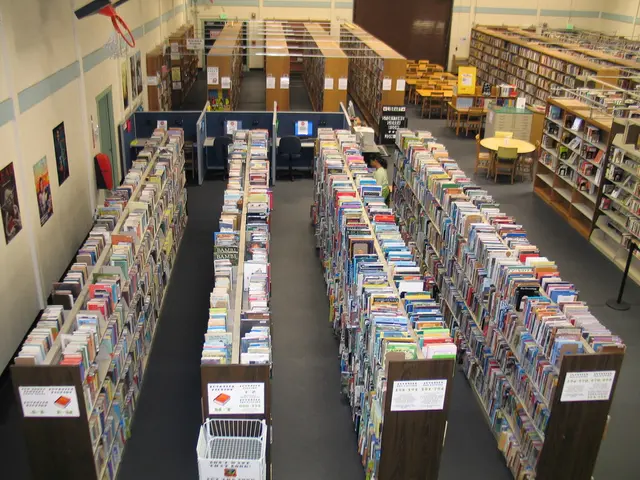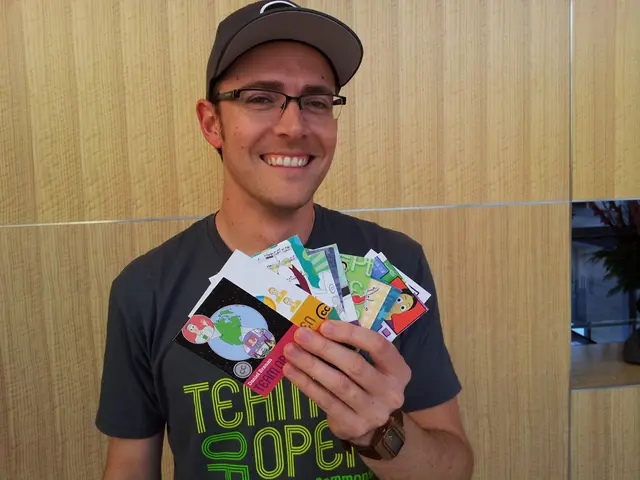Schooling with a Focus on Emotional Bond, Emotional Teaching Methods, and Stress-Free Environment: Strategy for Effective Learning in Three Schools in Colombia, Ecuador, and Mexico
Get a load of this! Three educators from different South American countries shared similar views at the Ticmas' VI Educational Innovation Seminar held during FIL 2025: learning is all about forming emotional bonds. Fascinating, right? Let me fill you in more on this.
Daniela Quadrio, Rosa Martínez Trejo, and Alexander Criollo from their respective institutions emphasized the importance of emotional well-being in the educational process. According to Criollo, the human bond cannot be replaced. His school's mission is not only about teaching content but also building relationships centered around trust.
Rosa Martínez shared a heartfelt opinion – schools should consider the student as a little person who learns better when they feel loved. She believes that providing a human education, one that makes students feel loved, accepted, and motivated, is of utmost importance. Daniela Quadrio stressed that a safe learning space encourages decision-making and resilience.
Transforming the Classroom Experience: Connecting with Students
Ever wondered how these schools foster such connections?
Joining Hearts: Vertical Mentoring
At the Anglo Colombian School, a program called vertical mentoring has been implemented for seven years. This program brings together students aged 11 to 15 once a week for sessions on socio-emotional development. These sessions focus on emotional skills, peer leadership, the presence of a significant adult, and individualized accompaniment.
Embracing the Family: Shared Spaces and Activities
At Sagrados Corazones Educational Unit in Ecuador, they rely on their Catholic identity during teacher selection. Before hiring, they evaluate not only academic capabilities but also a teacher's "human quality." By doing this, they aim to create teachers who serve as examples and become part of the students' families.
Martínez shared that at DEHCA Mex, they teach students to recognize and manage emotions in the classroom. They encourage regular relaxation and breathing exercises to help students learn effectively.
The Role of Playgrounds: Observation and Guidance
Quadrio highlighted the role unstructured spaces like playgrounds play in emotional learning. These spaces provide opportunities for observation, revealing a student's connections, interests, and frustrations. Teachers can interact with students here, discuss decisions, and share life lessons.
Combating Stress: Relaxation and Mindset Shift
Martínez revealed that some students get stressed about exams and may experience physical symptoms like gastritis or stomach pain. To combat this, their school decided to eliminate the term "exam" and replace it with "practices," focusing on trying rather than avoiding mistakes. They even created a fixed relaxation space to help students manage their emotions.
Supporting the Absent Family
Criollo addressed the challenge of low parental involvement in his community. He organizes ludic activities, shared workshops, and spiritual accompaniment for parents and children to build a sense of community. He believes that they are there to complement the family, not replace it.
When emotional bonds don't form: conflict resolution strategies
Criollo explained that his institution has a graduated protocol to handle situations where emotional bonds don't form. First, the student dialogues directly with the teacher. If that doesn't help, a tutor steps in as a mediator. In more complex cases, counselors or the vice-rectory becomes involved. The ultimate goal is for students to learn to resolve conflicts independently.
What kind of student do these schools aim to create?
Criollo stated that good people with strong values are their priority. Martínez added that they aim for students who are critical, analytical, and can collaborate. Quadrio concluded that they strive for each student to reach their maximum potential, whatever that may be, and equip them with tools, values, and autonomy to face the world.
In conclusion, by fostering emotional connections, schools can create an environment that encourages deep learning. They can do this by focusing on emotional well-being, project-based learning, personalized learning, and fostering collaboration and reflection. This combined approach creates a nurturing and supportive environment that empowers students to grow, learn, and flourish.
- Science and health-and-wellness, mental-health, and education-and-self-development are integral parts of the mission at Alexander Criollo's institution, as it highlights the irreplaceable human bond and prioritizes teaching content alongside relationship building.
- To enable students to learn better and form emotional bonds, schools like Anglo Colombian School implement programs such as vertical mentoring, focusing on socio-emotional development and individualized accompaniment.
- Rosa Martínez Trejo's school emphasizes managing emotions within the classroom and encourages relaxation and breathing exercises as a means to promote learning, while also tackling stress-related symptoms like gastritis or stomach pain among students.
- Realizing that some families may be absent or inactive in their child's education, Alexander Criollo organizes ludic activities, shared workshops, and spiritual accompaniment for parents and children to build a sense of community and support one another.
- When conflicts arise within the school community, a graduated protocol is employed to handle them, with students first communicating directly with teachers, then involving tutors, counselors, or the vice-rectory if necessary.
- In their approach to personal growth and development, the schools aim to create students who possess critical thinking, high levels of collaboration, and the ability to reach their maximum potential, becoming good people with strong values and the necessary tools to face the world.









